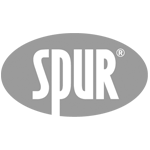They design and manufacture die forgings from the finest quality steel for the best companies in the global industry.
Problems from the past:
- Absence of any electronic record keeping.
- Incompatibility of production vs. maintenance. Forging lines
- Non-existent connection to the ERP system.
- Absence of SHOP-FLOOR system.
- No registration of the VTZ as defined by the Decree.
- Lack of visualization of the plan vs. reality.
Implementation process:
The project started to take shape in 2015, when the first negotiations took place for the implementation of the pilot project, which took place in early 2016. The then CEO concluded that the only way to go in this sphere was to develop a turnkey production management solution, i.e. according to the exact requirements of the executives from the production environment. Consequently, a group of employees was formed to prepare a detailed brief, which led to the initial solution for the forging line tracking needs.
Currently, the systems are operated in other parts of the production (tool room, mechanics, logistics, machine shop), as well as in the maintenance department, where a modern android application is used, as well as a native application for Windows computers. The MES system is constantly being expanded and the elements of paperless production and maintenance are gradually being implemented at all levels of management, which contributes significantly to the performance of the equipment and to increasing the efficiency of the workers using the applications supplied by INSEKO.
Current scope of production monitoring:
- 12 forging lines – Forging Centre – connection via digital converters using MODBUS protocol.
- 12 CNC machine tools – connection to Heidenhein, Fanuc control systems.
- 4 manual workstations in the MECHANICS department.
- 5 single-purpose machines at the DELÍRNA centre.
- 5 forging lines – sister company ALPER.
- 3 large-screen LCD – visualization of the work in progress of individual orders.
- 1 x 12″ tablet – stacking of moulds for the MECHANICI centre.
- The system is operated centrally on virtual servers for the companies Kovárna VIVA Zlín and ALPER Prostějov.
- Kiosks for operators, maintenance workers, foremen in number: 30 pcs, screen size 24,5″ with RFID 125 kHz and barcode readers.
Current scope of maintenance monitoring:
- 800 maintenance objects.
- The asset structure is divided into five levels.
- 2 large screen LCD.
- Recording of activities carried out takes place at the two maintenance workshops and at the production kiosks.
- ALPER uses 2 tablets with native android application.
- In 2022, the expansion of the systems to other production sections and maintenance facilities continues.
Benefits of the implemented solution for production monitoring:
- Automated online data collection from forging lines and tool room with integrated fault maintenance, RFID authentication and CT readers (order work in progress, plan execution, OEE).
- Integration on contracts, drawings, forgings database, non-conformances.
- Monitoring the production schedule and the status of tooling preparation for each forging line.
- Paperless documentation (display of actual drawings and technological data).
- Visualization of the status of production and maintenance contracts.
- Automatic transfer of production orders to the ERP system.
- Visualization and reporting (implementation of shop floor management).
- Real-time monitoring and escalation of alarm conditions (email, SMS).
- Motivational – evaluation system – automated calculation of surcharges and their visualization on kiosks with management superstructure.
- Linking the PM Toolkit with the maintenance information system (automatic reporting of the need for service intervention).
Implemented processes within the VIVA and ALPER maintenance system:
- Corrective maintenance, preventive maintenance, time and meter maintenance respectively. cyclic.
- The use of so-called. “checklists”.
- Management of failures detected during preventive examinations.
- General repairs and renovations, planned repairs.
- Production Support Processes – Inductor Replacements.
- Revisions, failures from revisions, inclusion and removal of equipment from the register.
- Implemented interface to the warehouse module in ERP ABAS called. warehouse mirroring.
- Maintenance technicians depreciate used spare parts in EAM. The resulting movements (expenditure, returns) are approved by the maintenance manager and are subsequently transferred to the ABAS ERP accounting system.
- Integration of several warehouses (ND warehouses, electrical warehouse,…).
- Visualization of current status on maintenance, status of lines (existence of faults, orders).
- Visualizations of current orders (information about the order, what needs to be done, whether someone is already working on the order, time worked per employee).
- Visualization of the status of maintenance workers on shift. Data is read directly from attendance, visualizing when the worker came to work and if they are currently working on the job and on what equipment.
- ALPER – mobile maintenance, using tablets with native android application.
- Executives only use mobile devices. They have all the information they need for implementation available on their mobile device. – At the same time, in the mobile device they perform the write-off of hours worked in the form of start/stop, write-off of ND from the warehouse using Bar or QR code

Ivan Sklenárik
Head of Development and Industrial Engineering Department Kovárna VIVA a.s.
"With PMT, we get data directly from the machines and can monitor production in real time. The simultaneous connection with the ERP system allows us to monitor the utilization of individual workplaces and the fulfillment of performance standards, which results in a more accurate allocation of capacity in the production plan. The unbiased data also shows us the most common causes of downtime. By eliminating these causes, production capacity is increased at the same operating cost."













